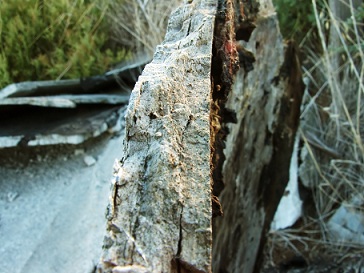A portable asbestos detector that could save thousands of lives

date: 17/02/2014
Project: Portable Real Time Detection of Airborne...
acronym: ALERT
See also: Info-Centre
Contact: http://www.asbestos-alert.eu
Once embraced as the “miracle mineral” for its tough, flexible, fireproof qualities, asbestos is now seen as a health hazard. It causes lung diseases like the malignant form of cancer called mesothelioma. Yet asbestos is still with us. Exposure from legacy asbestos products like insulation is the leading cause of work related deaths worldwide, and until now there has been no way of detecting the lethal presence of asbestos fibres in the air. The World Health Organisation (WHO) says 125 million people worldwide encounter white asbestos in the workplace, while the International Labour Organization (ILO) estimates that 100,000 workers worldwide die each year from all asbestos-related diseases.
ALERT project picks up research from the 1990s by the University of Hertfordshire, UK, which found a way to detect asbestos fibres through a new light-scattering technique. At the time, the project stalled as it was seen as too costly, but the ALERT consortium used recent technological innovations and added them to existing research to build a low-cost, portable detector. “Our challenge was to take this science and turn it into a practical and affordable instrument capable of alerting people to the potential presence of this lethal airborne carcinogen,” says Archer, who is also the Managing Director of the UK-based product development company Select Group.
Archer says the project has potentially immense implications. “There are no safe levels of asbestos exposure and there are currently no portable real-time airborne detectors on the market,” he says. Until now, the only test possible was a laboratory analysis, a process that can take days and wastes valuable time, often leaving those working in asbestos-laden buildings at risk of exposure.
Archer is currently working with third parties to develop new prototypes capable of addressing specific market sectors such as demolition, emergency services, asbestos removal and hazardous waste sites. “With ALERT tool, we can give 30 million European workers a means of detecting asbestos the moment it is disturbed, allowing them to protect themselves and avoid becoming one of the 100,000 people worldwide killed each year by exposure to asbestos,” concludes Archer.
Lastest on the project (May 2015)
The world’s first portable real-time asbestos detector is on the cusp of being launched on the market, says Danny Davis, the scientific officer for the EU-funded project ALERT. It could help construction workers and surveyors avoid exposure to dangerous levels of asbestos in the air at building and demolition sites.
The project developed a prototype of the detector by the time it ended in August 2013. Since then project partners the University of Hertfordshire and the Select Group of Companies have continued ALERT’s work by further developing the detector. The Select Group plans to launch the first of three planned versions on the market soon. All three versions will provide information on dangerous levels of asbestos in the air within seconds, says Davis.
The first to be launched will be a portable model aimed at asbestos and demolition industry professionals, such as construction workers and surveyors. It will offer real-time asbestos detection and include data on total respirable particle count, total fibre count and fibre concentrations. This information will be displayed graphically and is available for download.
The Select Group also plans to produce a more basic hand-held model designed for use by independent tradespeople. These include carpenters, plumbers, electricians and heating engineers.
A third version is intended as a stationary monitor for use in buildings. It will be networked so it can send alerts when it detects dangerous asbestos levels. “We see the device as a potential lifesaver for our members, for other professionals who are at risk of coming into contact with asbestos, as well as the wider community,” says Davis, who is an operations manager at the UK’s Chartered Institute of Plumbing and Heating Engineering.
Concept images of Alert Pro1000 and Handheld asbestos detectors
© The Select Group of Companies Ltd
©The Select Group of Companies Ltd
